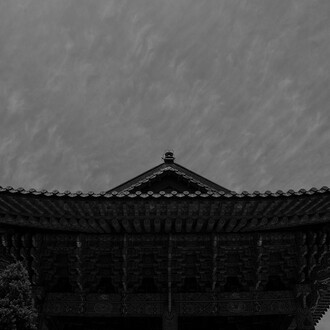In the posh Upper East Side of New York City, where a green Central Park extends against the urban bustle of downtown Manhattan, a new exhibition at the Kate Oh Gallery offers a journey into the landscapes of contemporary Korean art. I've had the privilege to offer a glimpse into this show. And, to my delight, a distinctive interplay emerges from the visual material that straddles seemingly disparate elements, weaving together threads of philosophy, culture, and human experience. The viewer may embark on an exquisitely personal exploration of "Urban Waves," delving into the nuanced complexities within the urban context.
At the heart of "Urban Waves" lies the rich tradition of abstract expressionism, where artists such as Tae Ju Bae and Seung Yeol Son harness the power of form, color, and texture to convey the essence of organic urban dwelling. I glimpse in their works a cityscape upon which emotions, memories, and aspirations are painted in alchemical strokes. As if drawing on the process philosophy of Alfred North Whitehead, a continental philosopher of the 20th century whose visionary metaphysics aims to synthesize the humanities and the sciences, "Urban Waves" probes how abstraction and organicity intertwine to shape our understanding of urban existence in the 21st century.
So how does the chaos of the old urban environment find its metamorphosed voice in an organism of our contemporary times? I think, in a way, the answer speaks through the show's fluid lines and dynamic compositions that mirror the ebb and flow of today's ideal city architecture. Through contemplative abstraction, these artists have invited me to navigate the labyrinthine corridors of the urban psyche, confronting the complexities of reconstructive postmodernity, like a letter of welcome and belonging.
In juxtaposition to the angularity of urban architecture, the organic forms of nature find expression in the works of artists such as Hwa Jin Lee and Mi Kyung Jeon. In their works, I perceive a vision of the city not merely as a jungle of skyscrapers, but a breathing organism pulsating with life. They evoke a sense of awe where urbanity becomes intertwined with the natural world. In other paintings, I seem to make out lush foliage, flowing rivers, and winding paths of abstraction emerging from old matrixes, offering glimpses of transcendence amidst undifferentiated chaos. In this symbiotic relationship between the organic and the urban, I'm constantly reminded of the enduring presence of nature within the heart of the city of our century.
I think a special note of caution should be served here. At its core, "Urban Waves" embodies not so much a dialectic between abstraction and organization but reflects a vision of what their renewed intersection could be. While abstraction speaks to the rational mind, unraveling the mysteries of the urban landscape through the language of form and composition, organicity speaks to the intuitive soul, reconnecting us to the primal rhythms of nature. Together, these elements form the tapestry of "Urban Waves", precipitating a phase transition of the harmonious whole.
Hence as you walk through the labyrinthine streets of the city, and as you peruse the delicate arrays of Kate Oh's paintings, you're welcomed into the intricate interplay of this emergent whole. This interplay holds a new thesis of understanding of urban metaphysics. The artists of the Kate Oh Gallery invite us on a philosophical journey that explores the possibility of the urban soul. It may not be too much to ask that through the lens of abstraction and organicity, amidst the ebb and flow of urban life, we find echoes of our own community, reformed and reshaped in the timeless rhythms of the green. This, I believe, is an aesthetic display of process philosophy that the discerning Whitehead himself would have approved.
(Waves, Process, Reality, and Contemporaneity by Albert Tang)
















